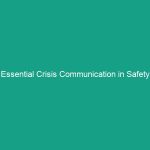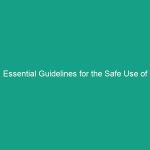Introduction
Good morning team,
Today, we’re going to discuss a critical aspect of Workplace Safety: Essential Work Refusal Guidelines. This topic is vital because understanding these guidelines not only protects you but also ensures the Safety of your colleagues. By knowing when and how to refuse unsafe work, you can help maintain a safe work Environment for everyone.
Understanding Essential Work Refusal Guidelines
The Essential Work Refusal Guidelines are a set of protocols that empower employees to refuse work that they believe poses a danger to their health and Safety or that of their coworkers. These guidelines are not just a set of rules; they represent a culture of safety that is crucial for our workplace.
It’s important to recognize that these guidelines are designed to protect you. Many employees may feel hesitant to refuse work due to fear of repercussions or a misunderstanding of their rights. However, knowing that you have the right to refuse unsafe work is vital for your well-being and that of your teammates.
Key Hazards, Risks, and Safety Considerations
In our daily operations, there are various Hazards and risks that can arise, making it essential to be aware of them:
- Hazardous Materials: Exposure to chemicals or other dangerous substances can lead to serious health issues.
- Unsafe Equipment: Using faulty or damaged equipment can cause accidents and injuries.
- Environmental Conditions: Extreme weather or poor workplace conditions can pose significant risks.
Ignoring these risks can lead to severe consequences, including injuries, illnesses, and even fatalities. It’s crucial to recognize that your health and safety should always come first.
Best Practices, Procedures, & Actionable Advice
Here are the steps you should follow if you encounter a situation that you believe is unsafe:
- Assess the Situation: Take a moment to evaluate the circumstances. Is there an immediate danger? Are there visible hazards?
- Communicate: Inform your supervisor or manager about your concerns. Use clear and direct language to explain why you believe the work is unsafe.
- Document: Keep a record of the incident, including details of the situation, who was present, and any steps taken to address the issue.
- Refuse to Perform the Work: If you still feel unsafe after discussing the situation, you have the right to refuse the work. Ensure that you do so following company protocols.
- Follow Up: After refusing the work, ensure that the issue is addressed and that appropriate Safety Measures are put in place.
For example, consider a situation where an employee notices that the safety guard on a machine is broken. They assess the risk, communicate their concerns to their supervisor, and refuse to operate the machine until it is repaired. This proactive approach not only protects the individual but also contributes to a safer workplace for everyone.
Regulations, Standards, and Compliance
Understanding the Regulations that govern safety in the workplace is essential. The Occupational Safety and Health Administration (OSHA), for example, outlines the rights of employees to refuse unsafe work. Compliance with these regulations is not just a legal obligation; it’s a commitment to maintaining a safe work environment.
Our company also has specific safety policies in place that align with these regulations, ensuring that everyone is aware of their rights and responsibilities. It’s crucial to familiarize yourself with these Standards to understand how they protect you and your coworkers.
Employee Engagement & Discussion
Let’s take a moment for discussion. Have you ever faced a situation where you felt unsafe at work? How did you handle it? What challenges did you encounter? Sharing experiences can help us learn and improve our safety culture.
Conclusion & Key Takeaways
In conclusion, understanding and adhering to the Essential Work Refusal Guidelines is crucial for your safety and the safety of your team. Remember the key steps: assess the situation, communicate your concerns, document the incident, refuse unsafe work, and follow up. These practices not only protect you but also foster a culture of safety within our workplace.
Thank you for your attention and commitment to safety. Let’s work together to prioritize our well-being and ensure a safe working environment for everyone.


